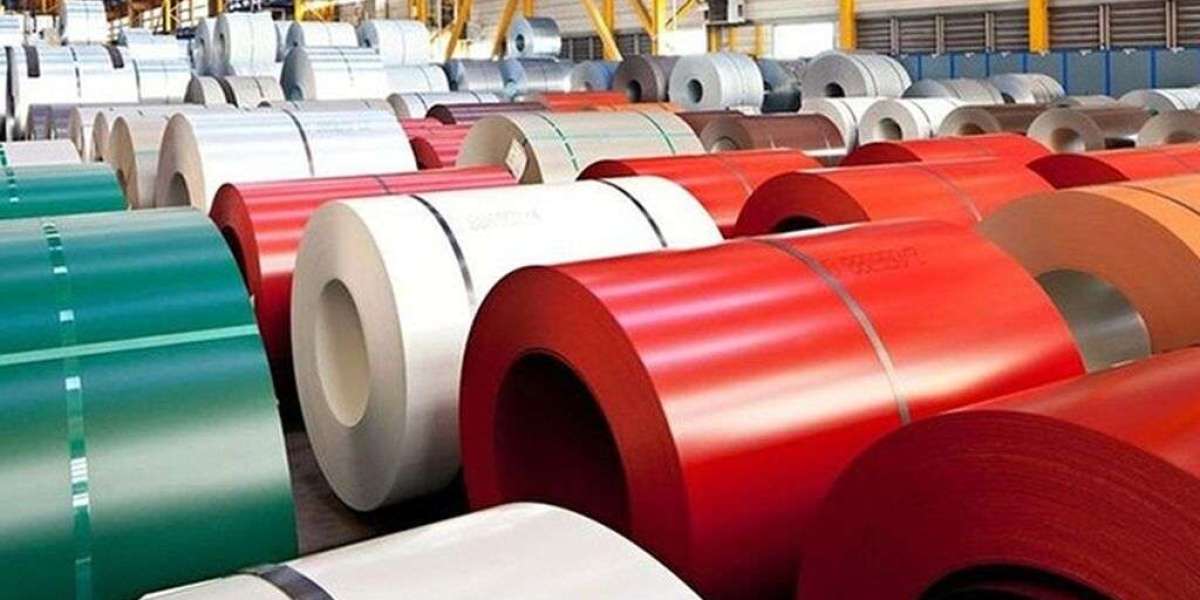The coil coatings market is a vital segment within various industries such as construction, automotive, and consumer goods, providing durable and aesthetic finishes to metal surfaces. However, despite the positive growth prospects, the industry faces several barriers that could hinder its expansion. These challenges include raw material price volatility, environmental regulations, technological limitations, and competition from alternative materials. Understanding these barriers is crucial for businesses operating in the coil coatings market, as overcoming them can pave the way for continued growth and innovation.
1. Raw Material Price Volatility
One of the significant barriers in the coil coatings market is the volatility of raw material prices. The production of coil coatings relies on various materials, including resins, pigments, and solvents. Fluctuating prices of these raw materials, especially due to geopolitical factors, supply chain disruptions, and global market trends, can affect production costs and ultimately the price of the final product.
For example, the price of titanium dioxide, a key pigment used in coil coatings, can vary depending on global supply and demand. Similarly, the rising cost of petrochemicals, which are used to produce some coating components, has created instability in pricing for solvent-based coatings. Manufacturers may struggle to maintain profitability when these fluctuations are unpredictable, and it becomes challenging to manage cost-effective production while keeping prices competitive.
2. Stringent Environmental Regulations
Environmental regulations are another barrier that companies in the coil coatings market must navigate. As environmental awareness increases globally, governments are imposing stricter regulations on the production and use of coatings, particularly those with high volatile organic compound (VOC) content. VOCs are harmful chemicals that contribute to air pollution and can be hazardous to human health.
To comply with these regulations, manufacturers are required to invest in research and development to create low-VOC and water-based coatings. While this shift toward more sustainable solutions is a positive step, it comes with challenges. Water-based coatings, for example, may have different performance characteristics compared to solvent-based alternatives, requiring manufacturers to adjust their formulations and production processes.
Moreover, these environmental standards vary across regions, and companies must ensure compliance with local regulations, which can increase operational complexity and costs. The transition to eco-friendly coatings also requires significant investment in technology and infrastructure, further adding to the financial burden on manufacturers.
3. Technological Limitations
Although the coil coatings market has seen significant advancements in technology, certain technological limitations still pose challenges. For instance, the application process for coil coatings requires precision and expertise to ensure a smooth, uniform finish. Traditional methods may not always meet the growing demands for faster production times and higher-quality results.
The emergence of new technologies, such as nanocoatings and self-healing coatings, presents exciting opportunities, but these innovations are still in the development phase and may not be widely available or cost-effective. Additionally, adopting these advanced technologies can require substantial investment in equipment, training, and research, which could limit the ability of smaller companies to compete with larger, more established players.
Furthermore, there may be challenges in achieving consistent quality across different batches of coatings, especially when scaling up production or using new formulations. The need for continuous innovation, coupled with technological limitations, makes it challenging for manufacturers to keep up with the market demands for more advanced and specialized coatings.
4. Competition from Alternative Materials
The coil coatings market also faces intense competition from alternative materials. For example, plastic coatings, powder coatings, and other types of surface treatments are increasingly being adopted in various industries due to their versatility, cost-effectiveness, and environmental benefits. In some applications, these alternatives offer similar or even superior performance compared to traditional coil coatings.
For instance, powder coatings provide a durable, high-quality finish without the need for solvents, making them an attractive alternative in terms of sustainability and performance. Similarly, plastic coatings are being used in industries where lightweight and corrosion-resistant properties are crucial. As these alternative materials gain traction, manufacturers in the coil coatings market must innovate to offer superior advantages, such as enhanced durability, resistance to environmental factors, and more sustainable production processes.
Moreover, the cost-effectiveness of alternative materials may put pressure on coil coating manufacturers to reduce their prices, which can impact profitability and market share.
5. Skilled Labor Shortage
Another barrier affecting the coil coatings market is the shortage of skilled labor. The application of coil coatings involves a high level of precision and expertise, especially when applying specialized finishes or using advanced coating technologies. As industries increasingly require coatings with specific performance characteristics, the demand for skilled professionals capable of executing complex coating applications is growing.
However, the skilled labor pool is limited, and companies may face difficulties in hiring and retaining qualified workers. This shortage can lead to delays in production, decreased product quality, and increased operational costs. Training and developing the workforce require time and investment, further complicating the issue for businesses trying to stay competitive in the market.
Conclusion
While the coil coatings market offers significant growth potential, it is not without its barriers. Raw material price volatility, stringent environmental regulations, technological limitations, competition from alternative materials, and a shortage of skilled labor all present challenges that manufacturers must overcome. However, these barriers also create opportunities for innovation and investment in sustainable technologies. By adapting to these challenges, companies can position themselves for long-term success in an increasingly competitive and regulated market. Overcoming these obstacles will require collaboration, research, and a focus on sustainability to ensure that the coil coatings market continues to evolve and thrive in the coming years.








